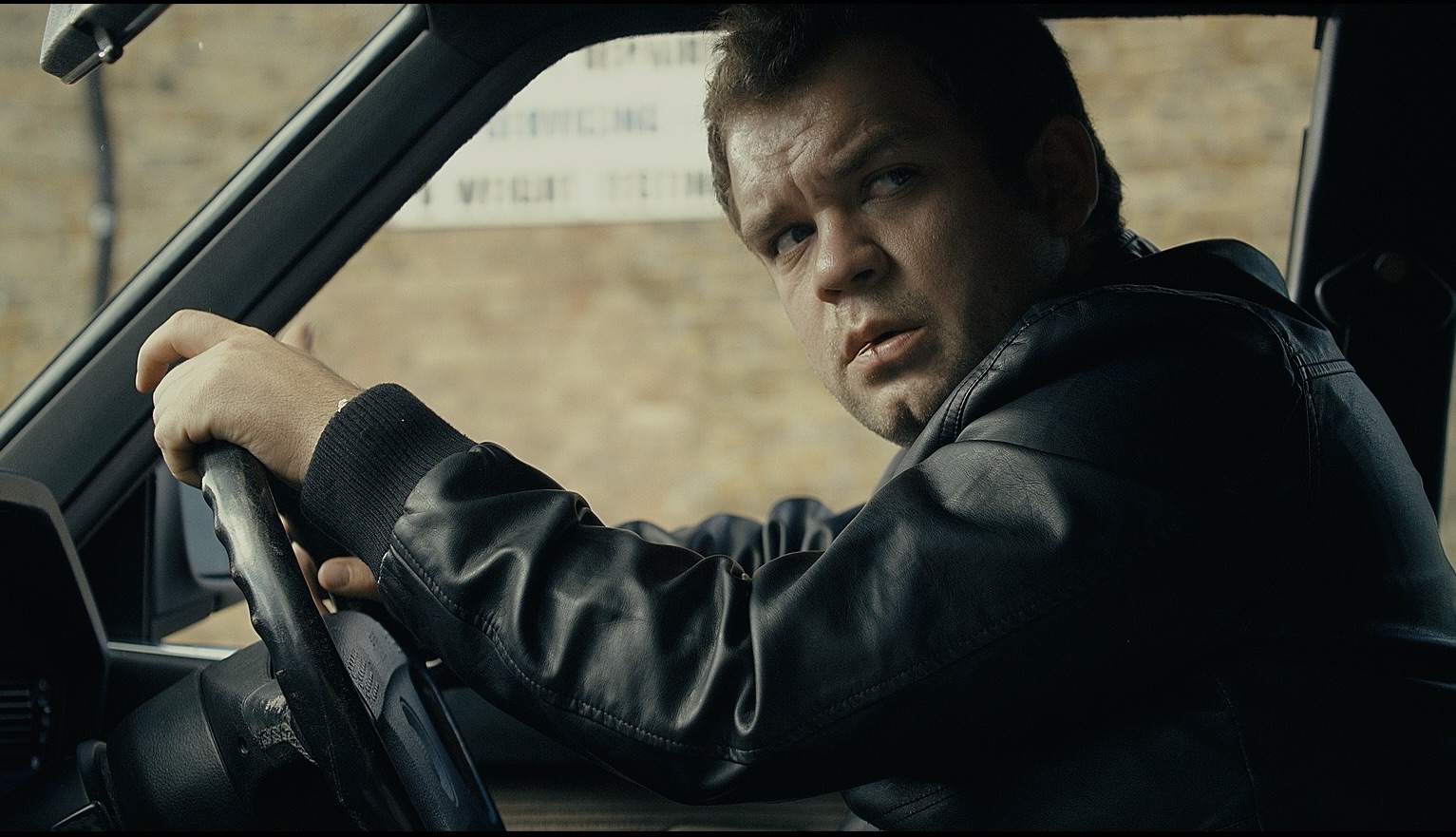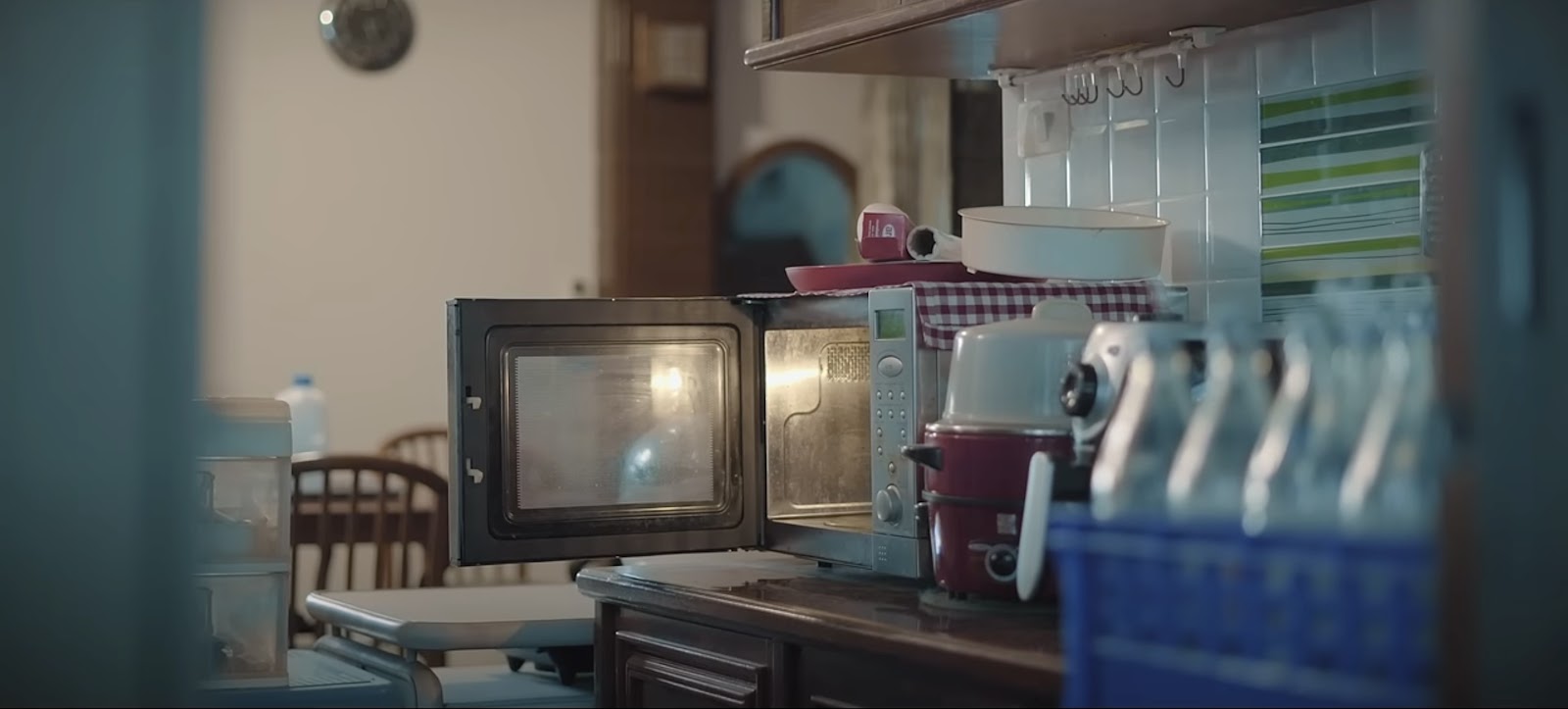The Fly (2014)
Coursework 2
The Fly is cleverly filmed as it implies a bank robbery which is unseen to the spectator. This is interesting as it shows that you don’t need to show the robbery to add to the films narrative and it also saves the budget. It also shows how diegetic sound can be used to skilfully build tension.This short film is rich in cinematic techniques. Close ups are frequently used to capture the driver’s expressions of vulnerability and distress. Perhaps reflecting the claustrophobia the driver is feeling in the car as he waits a tense three minutes. The camera is also handheld at times reflecting the driver’s frantic emotions and his desire to escape out the car. The slow dolly to the bank door illustrates the driver’s growing impatience and high adrenaline levels, which the spectator also experiences. The camera is a mirror to the driver’s thoughts articulating to the spectator that he is either unexperienced and doesn’t want to be there or is facing an internal conflict of morals which could be illustrated by the fly. The fly could perhaps be the driver’s internal conflicts. The fly’s irritating buzzing that is heard in the diegetic sound (probably enhanced in the editing process) could be reflecting the repetitive voice in the back of people’s minds that cannot be controlled and is always there. To apply Propp’s character functions to ‘The Fly’, it could be argued that the fly is sort of the hero of the narrative as it, in a way, stops the robbers from being able to make a getaway. The driver is isolated by the use of wide shots showing that he is vulnerable and also reflecting that he is the only one in the car and has no support. Perhaps burdened with responsibility that he is not comfortable with.
The colour palette is muted reflecting the driver’s bleakness and despair. The shadows are a visual metaphor which symbolise the anxiety and fear that are slowly consuming him leading to his psychological decay. The palette shifts as the film progresses. The colours become darker reflecting the driver’s growing distress and eventual transition to madness. The close up of the driver in the now broken mirror could be symbolic of the lack of the driver’s self-reflection as he doesn’t want to confront the immorality of his actions. At the start the spectator has the expectation that the driver may confront his morality and leave the scene, but this idea is deconstructed as we see the gradual decline of the driver and his broken identity. The driver’s appearance also deteriorates with his mental state. There is a normalcy to the driver’s clothes which could echo the duality of appearance and reality and how appearance can be used to shield internal struggles. Although the leather jacket and toothpick can be typical costume choices of a gangster. This could perhaps be the driver trying to alter his identity to be criminal but is a stranger in the clothes and looks slightly out of place.
The ambient sounds of the buzzing, faint cries and whispers amplify the driver’s and also the spectator’s paranoia as in a sense the spectator is positioned as part of the heist as we are also in the car waiting. The sound of the car running builds anticipation making time feel like its passing by slower. The sound helps establish mood and also create spectacle as it heightens adrenaline.
The structure is linear which allows for more tension to be built as there are no breaks in the narrative. It clearly follows the driver’s decent into despair. This linear and clear progression highlights the emotional tension of the driver’s interior and external circumstances. The jump cuts help visualise the driver’s fragmented thoughts and mental state. The cross cutting between the driver and the other heist members at the end articulates the reactions without the need for dialogue, in this case silence speaks volumes. The Kuleshov effect is utilised here revealing the driver’s defeat and frustration and the robbers’ disappointment. At this point the editing has slowed significantly, compared to the fast pace and rhythmic moments at the start to highlight the driver’s anxiety, to really draw the spectator in as they wait their impending doom, highlighting their hopelessness and their acceptance of being caught.



This is a superb analysis, detailed and perceptive. You identify also the biggest takeaway from it for us, that it's possible to suggest events that would be impossible on a zero budget (here, the heist). Well done. DR
ReplyDelete